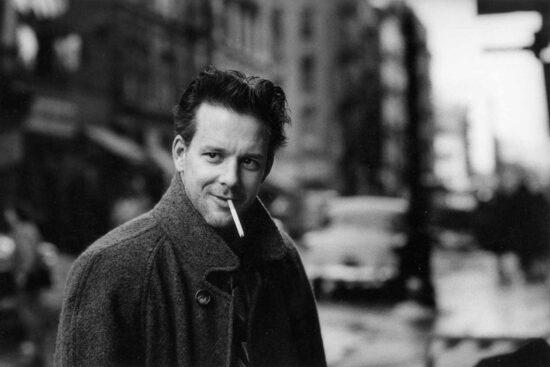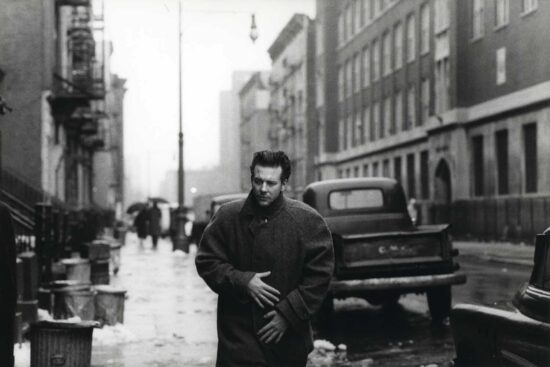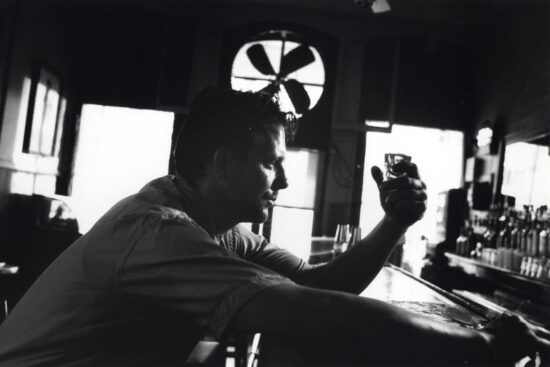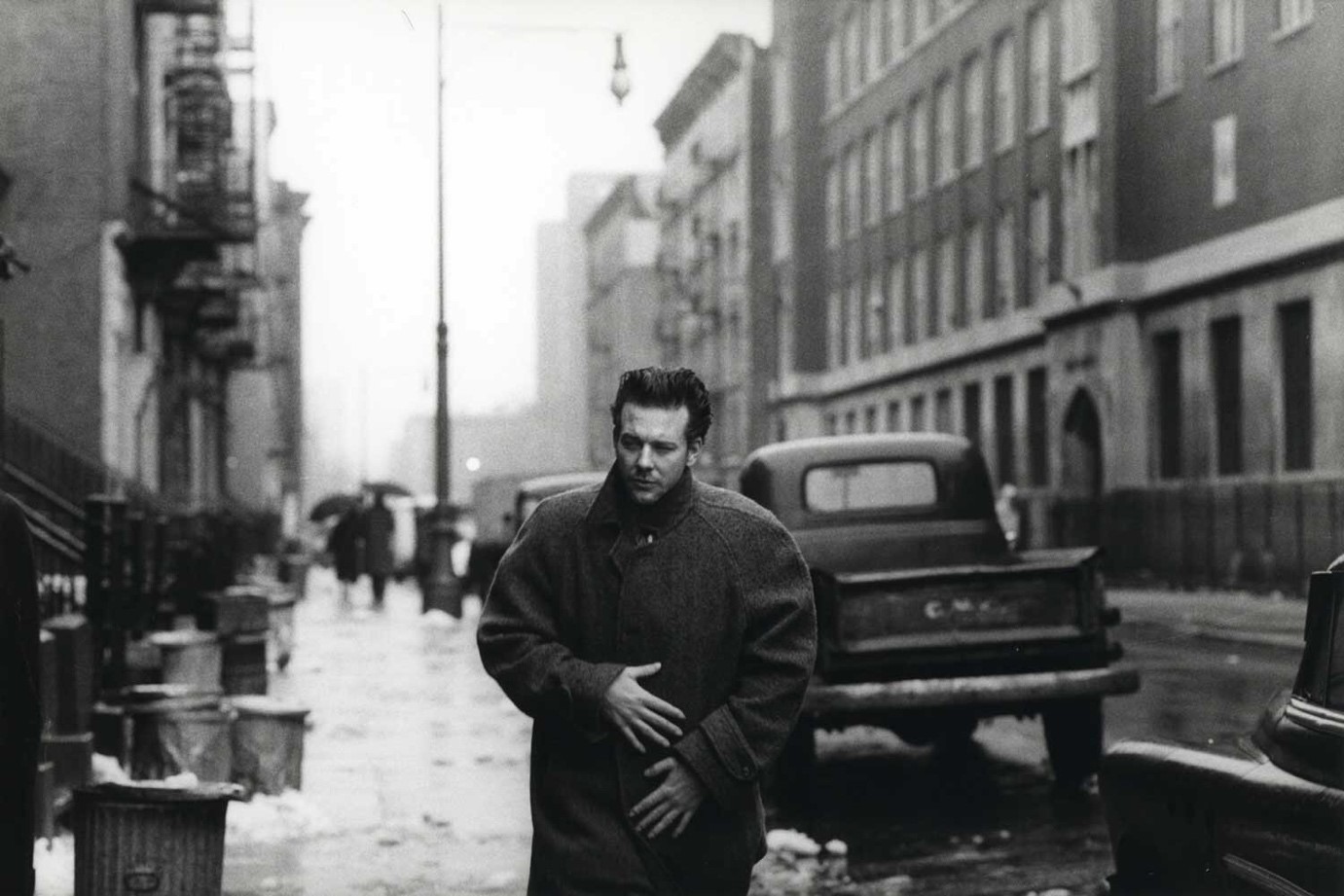
From the very beginning, Mickey Rourke was one of the four actors Alan Parker had on his list to play Harry Angel in the film Angel Heart (1987). “We arranged to meet in New York. I picked Mickey up from his hotel looking, as he always does off-screen, like an unemployed gas station attendant. We had lunch and he told me quite emphatically that he was the only one to play Harry Angel and so I should ‘stop talking to the other guys.’ We walked the streets talking about the film until it got dark.”
Rourke doesn’t care for his outward appearance. Harry Angel doesn’t either. He is a private detective looking for a missing band singer, Johnny Favorite, at the behest of Louis Cyphre, played with terrifying chill by Robert De Niro. This investigation takes the form of a nightmare for Angel as it progresses, as its past and his own demons catch up with him. A richly atmospheric film, filled with strong imagery and mysticism, at the intersection of noir and horror, Angel Heart was adapted from William Hjortsberg’s 1978 novel Falling Angel, but Parker moved the story from New York to New Orleans, a brilliant move which further imbued the film with a decaying Southern Gothic feel.
The “original attraction, I should imagine, being much the same as my own,” the director would explain, regarding his interest in the adaptation of the book (he wrote at large about each of his films on his website alanparker.com, a fascinating incursion into his cinematic universe – why don’t more directors do that?), was “the fusion of two genres: the noir, Chandleresque detective novel and the supernatural. I might hazard a guess that any Faustian story would ring bells in Hollywood and not all of them cash registers.” But Parker was a director who, although he knew what attracted the audience (he started out in advertising), wasn’t afraid to take risks and challenge conventions. His movies were made for moviegoers and movie lovers, not for critics. Which is what he did in Angel Heart. First, as already mentioned, he moved the bulk of the story from New York to New Orleans, first because many of the threads of the story led to New Orleans (his discussions with Hjortsberg revealing that the author had also thought of doing that), and second, because he felt that “shooting yet another Manhattan-based detective story would be tricky in that overly filmed city.” The dark and mysterious Louisiana, with its murky alleys and shadowy hallways and muggy heat serve the story much better as the narrative progresses and Harry tiptoes closer to the hellish truth.
Parker also wanted to avoid using voice-over in the narrative, which I found very interesting, because “as with all traditional first-person detective tales, the fundamental problem is in the translation of literary exposition into filmic narrative (Consequently, the over-use of voice-over in this genre.)” Another important change was that the story was moved from 1959 to 1955 “for a small but selfish reason. 1959 was on the way to the 1960’s with its changing attitudes as well as environments. 1955 for me still belonged to the 1940’s – and, because of the historical pause button of World War II, conceivably the 1930’s – so quite simply, setting it in this year allowed me to give an older look to the film.” It makes perfect sense.
It also makes perfect sense that Mickey Rourke would play Harry Angel. Not only does Rourke’s presence lend absolute conviction to the film’s generic roots, its black vision of despair and dread finding resonance in the universally recognisable suppressed impulses and fears as shared human responses, but his disheveled appearance combined with his intimately vulnerable screen performance alluded to a different kind of masculinity, that of Marlon Brando and James Dean. It’s also the kind of sensibility that allows him to slip through time, being not of the past nor of the present, but always in search of some kind of truth, appealing to so many generations. Fragile and rebellious, tough and vulnerable, cool and irrational, who sees danger but continues to approach it. “Mickey is an intuitive actor: doing each scene differently as he searched for some truth. With the imprecision also comes danger and while the danger is there, so is the magic.“ But the danger he cannot escape. He travels his entire spectrum of game, embodying a character who loses his footing, taking a hard-bitten look at the underside of one of the quintessential American characters.

“In L.A. I also had the chance to meet up with Mickey at his local café,” continued Alan Parker, recounting his pre-production meetings with Mickey Rourke. “In the space of an hour and a half, I managed to talk him out of having black hair, a Cyrano de Bergerac nose, a limp and six suits which he personally had made up by his pal to a design and with fabrics which missed the period of our film by about twenty years. He graciously accepted my suggestion that he stick to the acting.” His character Parker wanted to make “sympathetic. In the tradition of the down-at-heel gumshoe, his phlegmatic surface disguised an intelligence capable of unraveling a complicated, larger-than-life story with a degree of belief and conciseness.”
That belief and conciseness permeate every aspect of the film. Everything, from costumes to the paint peeled off of the walls has its own place in the story. “I went through the dozens of permutations on a dozen characters with the costume designer, Aude Bronson-Howard and art director Kristi Zea,” Parker recalled. “Mickey, congenitally scruffy, has the rare ability to make the most elegant suit look like a discarded potato sack, so it was easy to ‘dress him down’. Each costume, shirt and sock had to be washed a hundred times, to distress the fabrics so that they hung correctly, thereby being truthful to our period and to fit the de-saturated, monochromatic look that Michael Seresin, Brian Morris and I were after.” That monochromatic atmosphere, drained of colour, gave the film the gritty feel and grey soul, at the border between reality and the supernatural. “We had also taken out all the primary colours from the street, something we continued to do throughout the film with the sets and the costumes following the same colour palette as we attempted to shoot a black and white film in colour.”
The colour was taken out from both the streets of New York – Parker wanted the beginning of the movie to be filmed in the Lower East Side and Harlem: “I was particularly interested in the bizarre religious movements of the 1930’s and 1940’s, born of economic isolation, and perhaps spiritual desperation” – and from the streets of New Orleans. What else to wear in bleak, cold, wintry New York than a dark-coloured oversized coat, reminding me once again of those photographs of James Dean by Dennis Stock taken in 1955 on the streets of New York in his big coat, shrugging his shoulders and withdrawing his neck into the coat, too rushed to stay in focus? Only after you have reached the end of the film, you realise how reassuring this coat is for Harry Angel in this first part of the story, like a protection from the truth and from himself. And then, what else to wear in New Orleans than soiled and well worn-out clothes peeled off one after another, almost shredded to pieces, as he is constantly scuttling through the heat-soaked streets, every step in the decaying city and its seedy bars and hotel rooms taking him further down into dissolution?

This piece is published courtesy of classiq.me
Film stills courtesy of Carolco International N.V., Winkast Film Productions, TriStar Pictures
